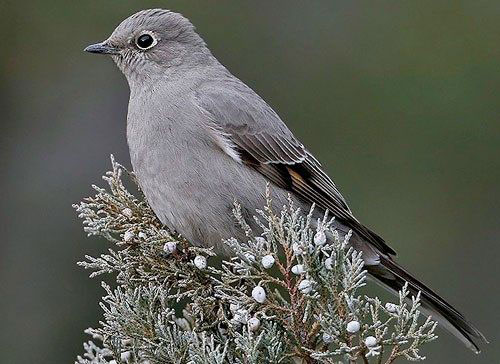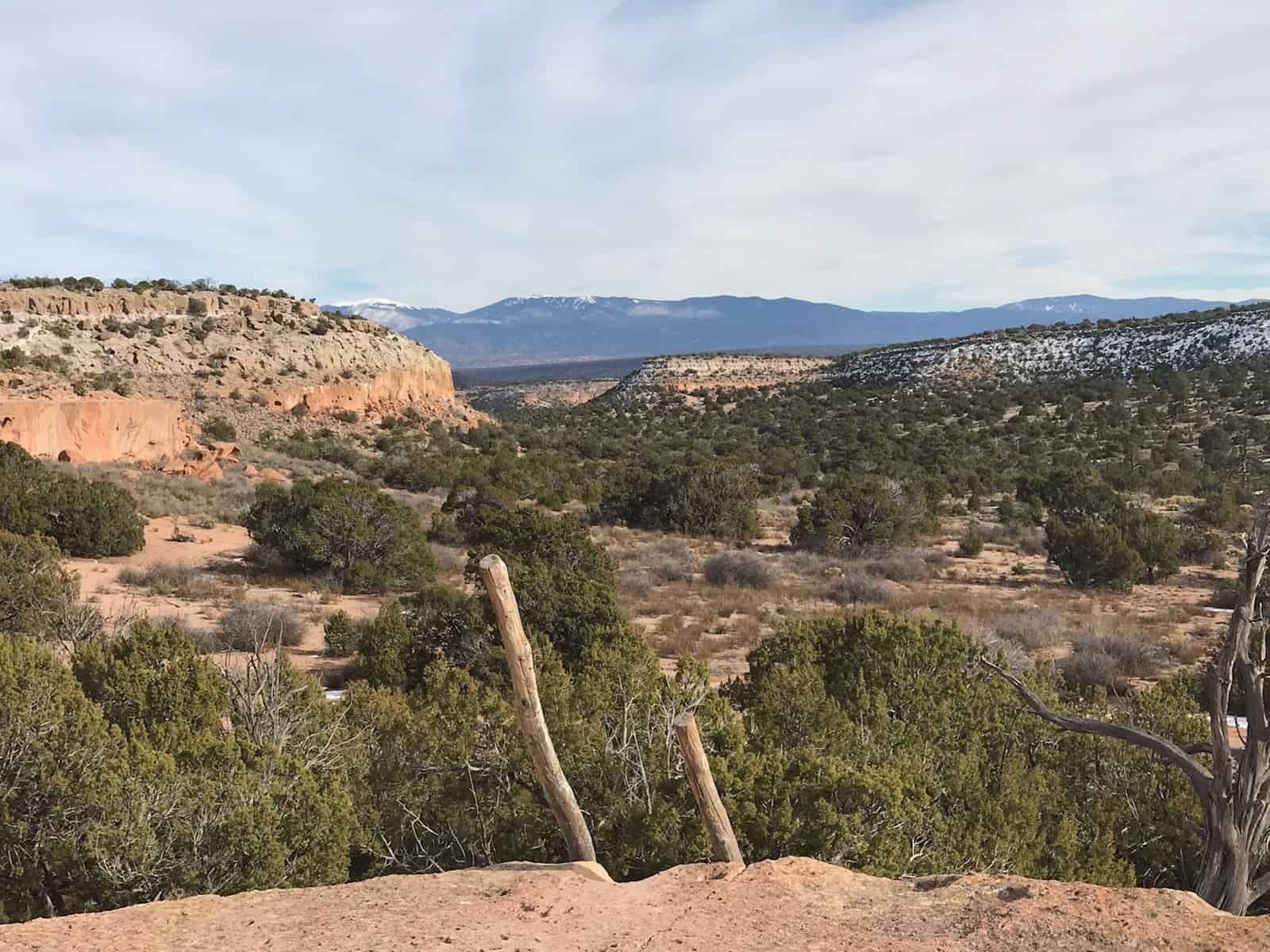Standing At The Window
For the past three summers I’ve spent in my Santa Fe casita I’ve been visited by Townsend’s Solitaires, small gray birds that trill complex melodies or tone a single B-note call. There is always one that sings from the branches of the pinon nearest the long narrow windowpanes in my front room. This expanse of glass is my aperture to the Sandia and Monzano Mountains and the ever-changing New Mexico sky. They are also the target of this sole avian who, for weeks, repeatedly throws itself against them with a loud THWACK! Alarmed that it might harm itself and annoyed by its attempts, I tried shooing it away by furiously waving scarves and kitchen towels at it, by banging on the window, and finally by going outside and taking a broom to the branch where it perched. Everything worked for a brief period of time. Mostly the little fowl would puff itself up to nearly twice its size and ram the pane again.
My friends thought the bird mistook its reflection in the window for a rival. I discovered that people hang mobiles or paste bird silhouettes made of reflective paper on their windows to prevent what I was witnessing. Because this warbler’s behavior was so focused and repetitive, I didn’t think those methods would work. So, I continued my futile attempts – until I was reminded of a sage mentor who advised looking at nature as a metaphor for life. I started considering how we humans continually hurl ourselves into the same harmful situations.
In psychological and coaching circles there is increasing discussion about the impact and repetitive nature of trauma. Trauma can be directly experienced upon or witnessed by our bodies. When trauma happens or is reactivated, our reptilian brain gives us three options – fight, freeze or flee. There are other options – healing and resilience. Healing weakens or stops the charge of the trauma. Resilience allows us to pause and ask how we can respond in a way that disrupts the trauma pattern in ourselves and others. With the continued trauma of racial hatred and violence in our country, our resilience is sorely needed.*
This morning when the bird began its routine, instead of acting from the aggravation that tensed me and egged me on to fight, I got close to the window and looked at it calmly and curiously. It eyed me through varied directional swivels of its head, singing the entire time. In pausing I also got to see two Mountain Chickadees with their beautiful black striped faces, a group of tiny Juniper Titmice that delightedly frisked from branch to branch, and a gorgeous Northern Flicker that seemed intent upon poking holes in the side of my house. Finally, the Solitaire flew to a juniper a few trees away. Then it returned, perhaps testing my response. I had to stand quietly several times before it finally flew far enough away that I lost sight of it.
Healing trauma takes time. To garner the resilience to create a relationship with someone radically different in belief from me, who could reactivate my trauma, would take time. It would also take choice and commitment, and it could allow an opportunity for joy. I won’t always have the will or courage to stand in curiosity at the window. I do for this bird, who still returns and now stares and sings at me through the glass. I’m hoping its lesson is a start.
*My Grandmother’s Hands by Resmaa Menakem is a powerful resource for working with racialized trauma.

